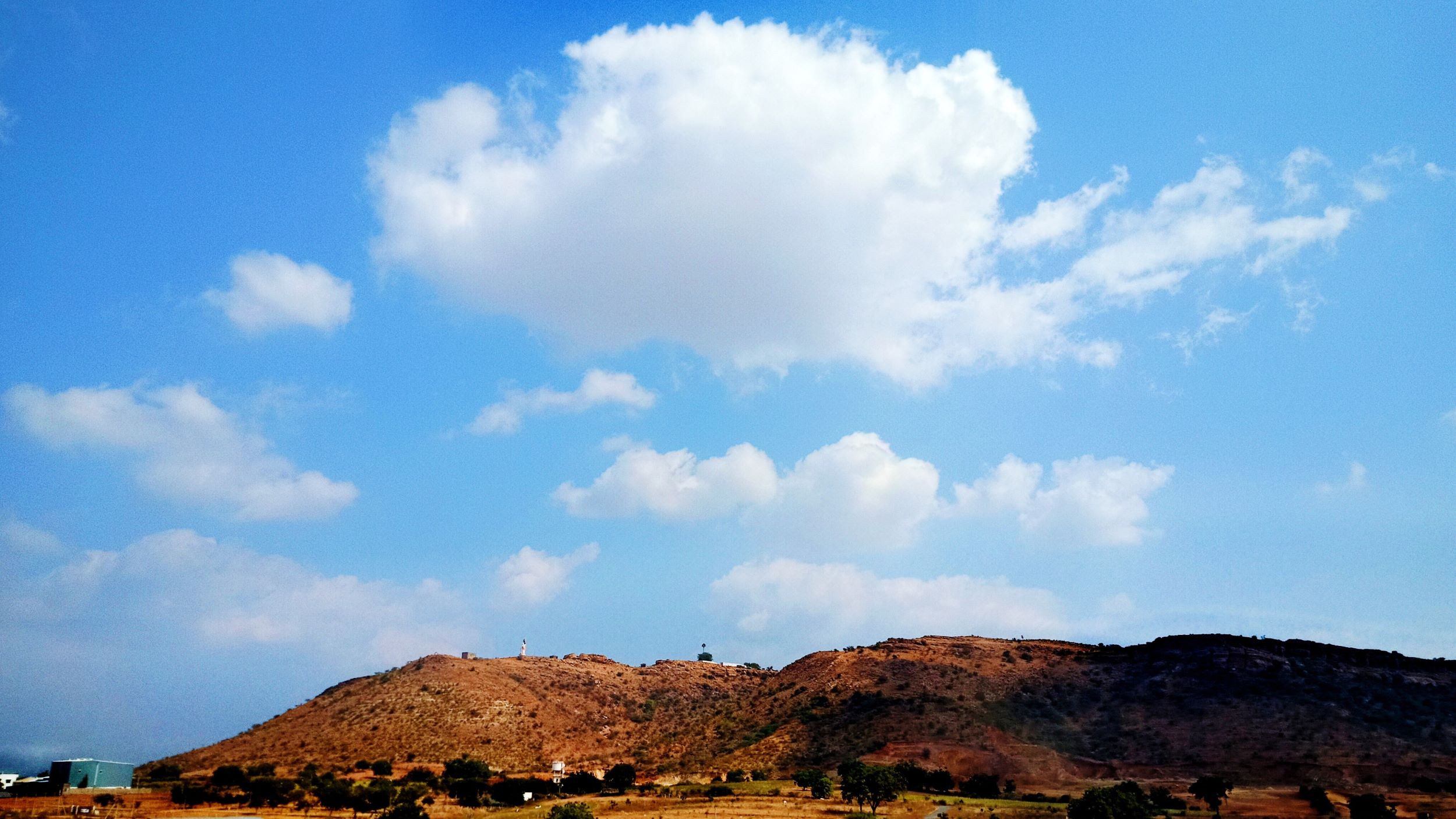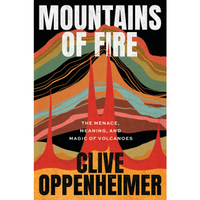'Hunter-gatherers must have gazed in horror': What would Toba's supereruption have been like for our ancient relatives?
"This was a blast 150 times bigger still than Tambora's, disgorging enough pyroclastic rock to cover the whole of the United States to the depth of a one-storey home."

In this excerpt from "Mountains of Fire: The Menace, Meaning, and Magic of Volcanoes" (The University of Chicago Press, 2023) by Clive Oppenheimer, the author looks at the supereruption of Toba 74,000 years ago, and what impact it could've had on the ancient humans — or their relatives — living in India at the time.
Yellowstone's last supereruption took place 640,000 years ago, long before our species emerged. More interesting to consider, I would argue, is Sumatra's "Youngest Toba Tuff" eruption, just 74,000 years ago. By that time, our ancestors were using advanced stone tool technologies, and likely knew how to tell a good yarn, too. This was a blast 150 times bigger still than Tambora's, disgorging enough pyroclastic rock to cover the whole of the United States to the depth of a one-storey home. About a third of the deposit piled up on northern Sumatra, and much of the rest lies beneath the floor of the Indian Ocean.
Given its great scale and period, close to both the onset of the last Ice Age and the time when Homo sapiens dispersed out of Africa, this "supereruption" has become entwined in debates concerning climate change and human prehistory.
The clearest topographic trace of the supereruption is an elliptical crater lake, sixty miles long, amidst the peaks, forests and rice terraces of the Batak region of northern Sumatra, an area explored extensively by Franz Junghuhn in the early 1840s. The caldera is so vast that from the ground it is hard to get the sense of being on a volcano — the scalloped rim and blue-grey water simply dissolve in haze and skylight far short of the distant margin.
Pumice deposits from the eruption dazzle in canyon walls and extend deep below ground, but perhaps more exceptional is the mostly unseen veneer of dust that mantled a fifth of the Earth's surface.
Related: What is a supervolcano? The answer isn't so simple.
While there are only minor quibbles about the quantity of pumice and ash involved in this cataclysm, there is no consensus on how much sulphur it released into the atmosphere — the estimates are more like guesses and vary enormously. Some sulphur layers in the polar ice cores have been suggested as possible candidates, but none has yet been definitively attributed to Toba.
Sign up for the Live Science daily newsletter now
Get the world’s most fascinating discoveries delivered straight to your inbox.
This hasn't prevented climate scientists from running computer models to gauge the supereruption's global repercussions — they are interesting in their own right, but none can be claimed to provide a reliable picture of what actually happened until we properly constrain Toba's sulphur potency. However, even the most extreme model scenarios investigated do not simulate widespread glaciation, so one thing that's clear is that Toba did not trigger the last Ice Age.

Toba was on my gap year tour before going to university — I stayed for several days on Samosir island (an uplifted block of the 74,000-year-old ignimbrite rising from the centre of the crater lake).
But despite this early acquaintance with Toba, I ended up studying the eruption more closely by going further away — halfway across the Indian Ocean to southern India. The site lay between a dry riverbed and the village of Jwalapuram in Andhra Pradesh. A local cottage industry had sprung up to mine a layer of ash just below the surface. It was sold as an abrasive for use in detergents. There are no volcanoes anywhere nearby, and its chemical make-up is an exact match for Toba: this is the fallout from the pall of fine ash carried by stratospheric winds across the Indian Ocean from Sumatra.
Even more exciting, the ancient soil layers sandwiching the thick bed of ash contained many prehistoric tools: flakes, scrapers and cores made from chert, chalcedony, quartz and limestone. I was working in a team with archaeologists, and while they painstakingly recovered every piece of worked stone, I used DIY-store trowels, knives and paintbrushes to reveal subtle variations in the deposits and to exhume the soil surface on which they rested.
The stifling heat, humidity and dust in the pits were overwhelming. Biting flies tormented me. But these discomforts were eclipsed by the thrill of exposing the moment the ancestors witnessed darkness at noon and the earth turned to powder. While my typical fieldwork — pointing spectrometers at drifting gas clouds — addresses the here and now of volcanic action, revealing terrain buried for 74,000 years felt like time travel.

The sugary deposits preserved remarkable details, such as the tunnels through which bugs had escaped their rude burial in fallout. I also found a level in the ash with abundant leaf impressions — I guessed that the trees were defoliated by the veneer of dust. When the sky cleared 74,000 years ago, the toolmakers and hunter-gatherers must have gazed in horror at the infinite carpet of blinding white powder; perhaps, somewhere, their footprints are preserved in it.
Above this layer were several much thicker stripes of ash with tell-tale signs of mud cracks. This matter must have settled out on the surrounding hills but was then washed downslope by monsoon rains. If so, that would mean the eruption did not greatly disrupt the cycle of wet and dry seasons, as some have suggested.
The deluge of wet ash had set like concrete around tree trunks and branches, helping to petrify them. It's hard to imagine human populations continuing to inhabit such shifting ground. Perhaps they left their formerly wooded homeland and sought resources and cave shelters on higher ground. What stories did their descendants tell of dislocation and survival? Certainly none are still preserved over such a span of time, but is it possible that ancestral experiences of such crises helped to shape what we call "human instinct"?
We know that humans were in India when the ash fell because of all the implements, but two key questions remain: what species were they and did they endure the catastrophe? Since there are no human fossils at this site nor of this period from anywhere on the subcontinent, the only clues are the stone tools. Unfortunately, it is not easy to attribute one flake or scraper to Neanderthal manufacture and another to Homo sapiens.
After much measurement and characterisation, the specialists concluded they most resembled tools found with Homo sapiens fossils in southern Africa, and so credited the Indian samples to the handiwork of our species. If correct, this implies "we" had reached the subcontinent more than 74,000 years ago. But others disagree. Resolving the matter would have profound implications for understanding the drivers of migration of our species from Africa to Asia and beyond, as well as our encounters with other extant humans, including Neanderthals and Denisovans.
Reprinted with permission from Mountains of Fire: The Menace, Meaning, and Magic of Volcanoes by Clive Oppenheimer, published by the University of Chicago Press. © 2023 by Clive Oppenheimer. All rights reserved.
Mountains of Fire: The Menace, Meaning, and Magic of Volcanoes - $19.53 at Amazon
In Mountains of Fire, Clive Oppenheimer invites readers to stand with him in the shadow of an active volcano. Whether he is scaling majestic summits, listening to hissing lava at the crater's edge, or hunting for the far-flung ashes from Earth’s greatest eruptions, Oppenheimer is an ideal guide, offering readers the chance to tag along on the daring, seemingly-impossible journeys of a volcanologist.

Clive Oppenheimer is a volcanologist at the University of Cambridge and the Etna Observatory. He is also a filmmaker and made two documentary features with Werner Herzog ("Into the Inferno and Fireball: Visitors from Darker Worlds"). He has collaborated with volcano observatories worldwide in the development of monitoring devices, and participated in 13 field missions in Antarctica to study Erebus volcano.











